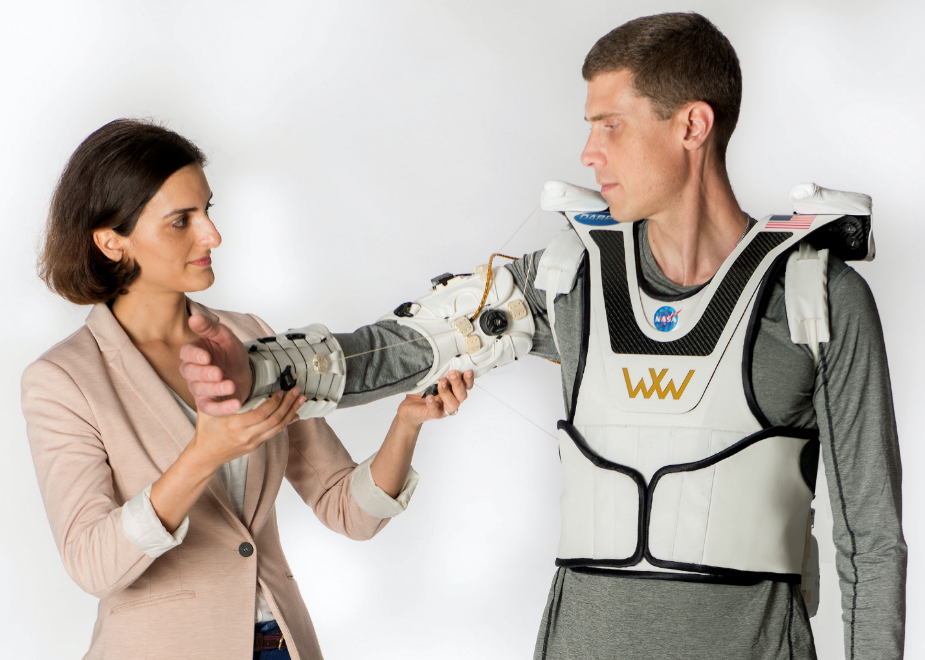New wearable technology takes on the human shoulder
You’ve heard of NASA’s X1 robotic exoskeleton, right? It’s the robot a human can wear over their body to either assist or inhibit movement in leg joints. Well, now NASA’s Wearable Robotics Laboratory, in collaboration with Rice University, has used the technologies developed for the exoskeleton and spacesuit Roboglove to help with the rehabilitation and augmentation of one of the most complex human joints: the shoulder.
NASA’s Space Technology Mission Directorate supported the development of X1 and Robo-glove through its Game Changing Development Program (GCD). GCD advances innovative technologies that have the potential to revolutionize future space missions, as well as improve life on Earth.
The Soft Wearable Upper Extremity Garment, or “Armstrong,” is worn on the upper body and can activate the shoulder and elbow joints using a Bowden cable transmission system. This system relies on actuators in the torso to pull on synthetic tendons that cross the shoulder and elbow joints, creating the desired movements. Integrating this technology could provide a means to augment astronauts during planetary spacewalks, easing difficult manual lifting and manipulation tasks.
To learn more about Armstrong, click here. (The story about Armstrong starts on page 30.)
Click here to learn more about the GCD Program.

The Soft Wearable Upper Extremity Garment, or “Armstrong,” as modeled on the upper body. It activates the shoulder and elbow joints using a Bowden cable transmission system. Image Credit: NASA








